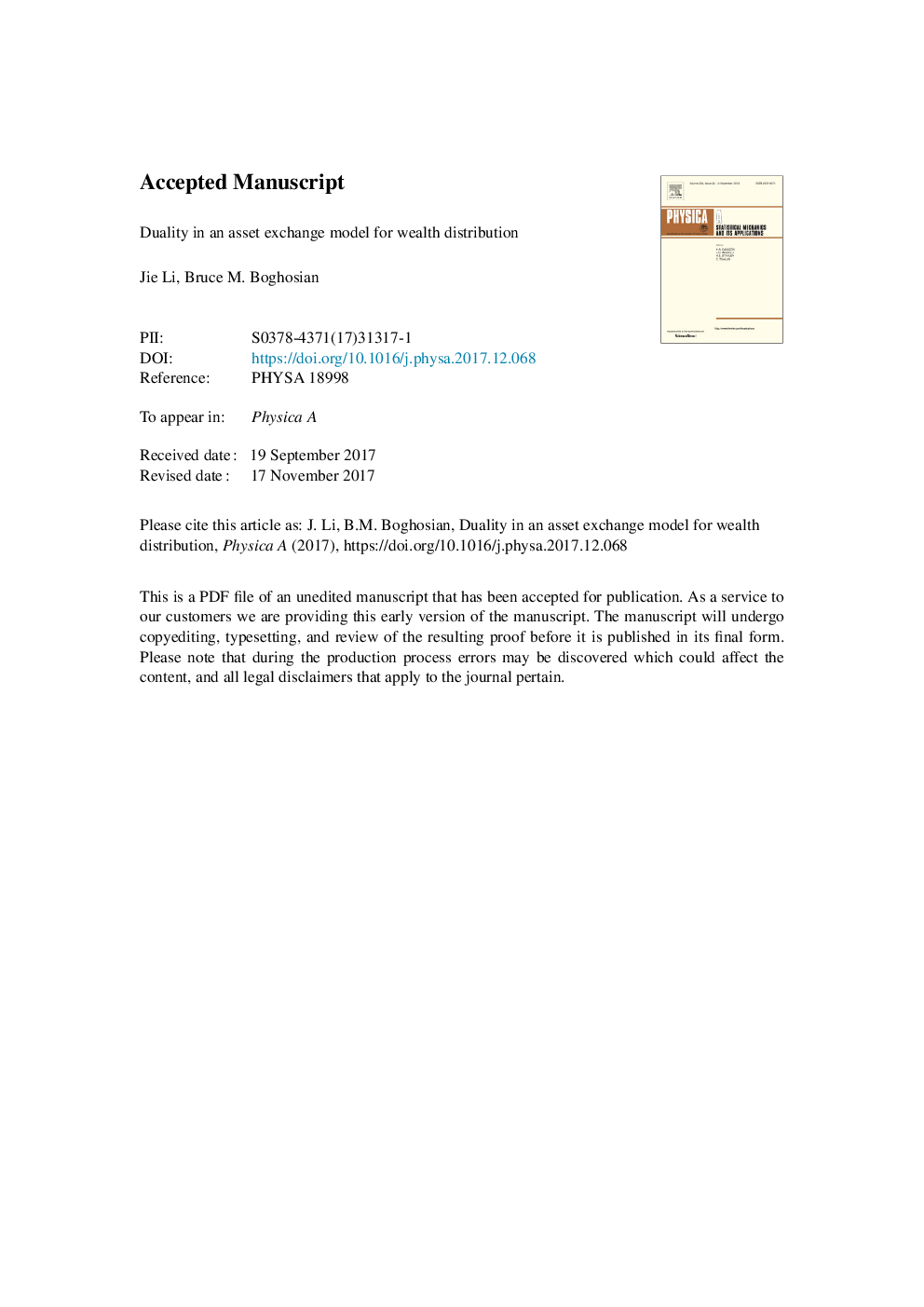| Article ID | Journal | Published Year | Pages | File Type |
|---|---|---|---|---|
| 7375868 | Physica A: Statistical Mechanics and its Applications | 2018 | 20 Pages |
Abstract
In this paper, we further elucidate the phase behavior of this model - and hence of the generalized solutions of the Fokker-Planck equation that describes it - by demonstrating the existence of a remarkable symmetry between its supercritical and subcritical regimes in the steady-state. Noting that the replacement {ζâÏ,Ïâζ}, which clearly has the effect of inverting the order parameter ζâÏ, provides a one-to-one correspondence between the subcritical and supercritical states, we demonstrate that the wealth distribution of the subcritical state is identical to that of the corresponding supercritical state when the oligarchy is removed from the latter. We demonstrate this result analytically, both from the microscopic agent-level model and from its macroscopic Fokker-Planck description, as well as numerically. We argue that this symmetry is a kind of duality, analogous to the famous Kramers-Wannier duality between the subcritical and supercritical states of the Ising model, and to the Maldacena duality that underlies AdS/CFT theory.
Related Topics
Physical Sciences and Engineering
Mathematics
Mathematical Physics
Authors
Jie Li, Bruce M. Boghosian,
